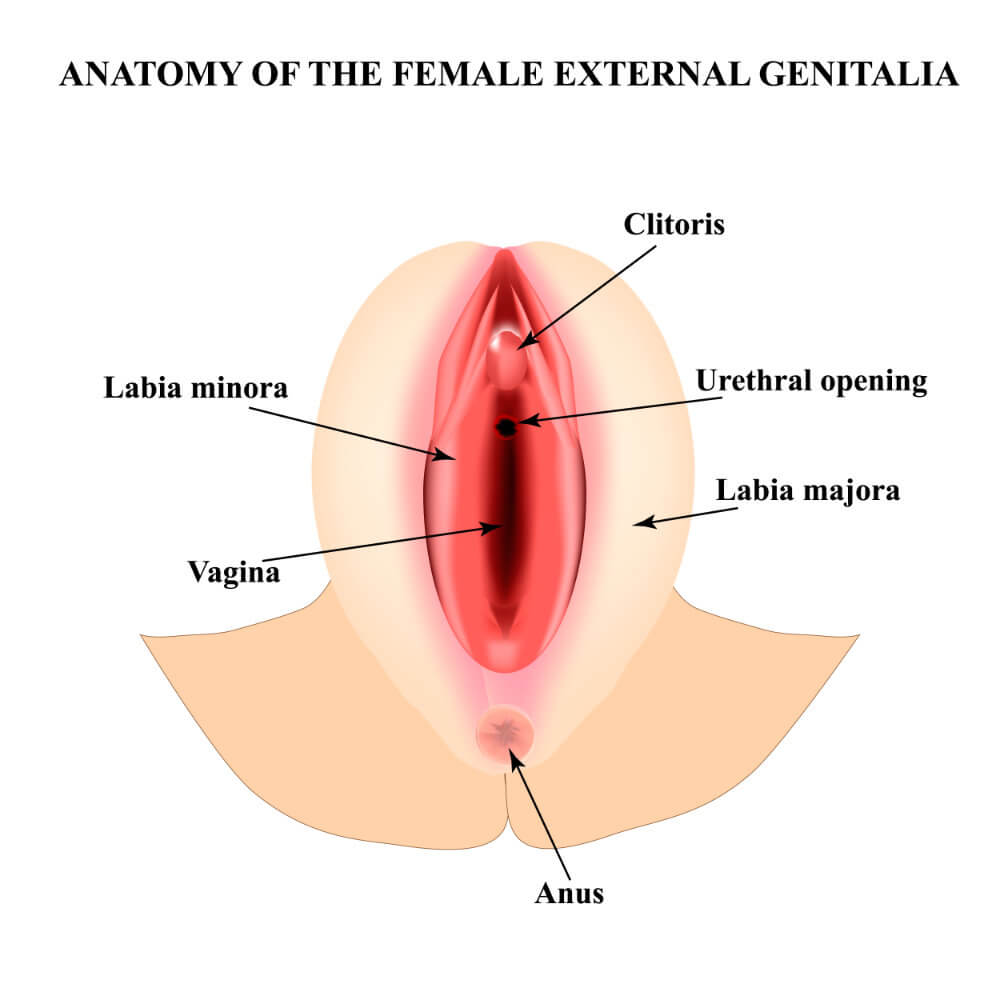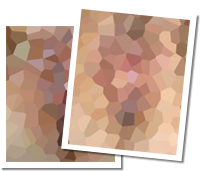Labiaplasty Surgery with the utmost discretion
At Me Clinic Melbourne, we understand discussing a labiaplasty is a highly sensitive issue. Many women feel uncomfortable talking about such a delicate topic and instead live with their symptoms and problems. Many who do so are unaware of the options available to help them.
Commonly performed to address a range of physiological issues such as discomfort when wearing tight pants or pain experienced during intercourse, many patients opt for a labiaplasty procedure purely because they’re unhappy with the size or shape of their labia.
Labiaplasty is a leading treatment option for women who are concerned by their large or irregular labia.
Me Clinic provides a discreet and comfortable environment where you can discuss your problems openly with our trusted surgeons who are not only understanding but compassionate.
Surgical Warning: Any surgical or invasive procedure carries risks. Before proceeding you should seek a second opinion from an appropriately qualified health practitioner.
Read more on the Risks of Surgery
What is a Labiaplasty?
Labiaplasty is a surgical procedure that alters the labia minora and the labia majora, reducing the size and protrusion of the labia minora. Like any surgical procedure, it carries potential risks and requires a recovery period. The outcomes vary depending on individual characteristics.
A labiaplasty is a surgical option that can alter the size of the inner and outer lips of the vagina. This can be related to genetics but is often sort after childbirth or due to a woman having an enlarged labia. If this is the case, this section of the vagina will protrude out of the vaginal area and can sometimes be visible through clothing.
The labiaplasty procedure can reduce the size of the labia. However, outcomes will depend on individual anatomy, and surgery is not the only solution. If you are feeling physical discomfort due to the chafing of your labia, this procedure can provide some relief.

A labiaplasty can alter the size of the lips of the vagina for women who have an enlarged labia minora. Ref: https://www.shutterstock.com/image-illustration/female-external-genitalia-anatomical-structure-vulva-1664345344
Labioplasty Case 1
LabioplastyThis 27-year-old patient wished to alter the size of their labia to address the discomfort during exercise they experienced as well as during sexual intercourse.

Before
Restricted
This content is restricted to people 18 years and over. It contains graphic nudity which may offend. By clicking "I Agree" you confirm that you are the required age.
I Agree
After
Restricted
This content is restricted to people 18 years and over. It contains graphic nudity which may offend. By clicking "I Agree" you confirm that you are the required age.
I Agree More before and after images shown below.
Performed By: Dr Ashley Granot (M0001026218) MBBS, FFMACCS (Med), FACP, FACNEM, ABBRM, MA5M Cosmetic Doctor, Melbourne
Labiaplasty Surgical Options
For women who are struggling with large or irregular labia, discomfort and irritation when wearing tight clothing or even experiencing pain during intercourse, Me Clinic offers cosmetic surgery options to overcome these sensitive problems. Other changes in the vaginal area which are brought upon by childbirth, ageing or weight fluctuations can also be helped with the right procedure.
Our team of cosmetic surgeons are here to listen to your requirements and advise you on the cosmetic surgery options available. Please note that the results of each procedure can vary from person to person. Below are just a few of the other vaginal surgery options that can be performed.
There are also alternatives to traditional labiaplasty surgery for those who are exploring their treatment options (see below).
Labiaplasty Results
What can you expect from a Labiaplasty procedure? For starters, a labia minora reduction is a surgical procedure to reduce the inner lips otherwise known as the inner labia. The results are usually regarded as permanent. Some women have reported feeling more comfortable after the procedure. However, outcomes will depend on individual characteristics and circumstances.
Read more about recovery after labiaplasty – a week by week timeline.
Labiaplasty Case Study 2
LabioplastyThis 40-year-old patient sought advice on labiaplasty as they were experiencing discomfort during intimacy.

Before
Restricted
This content is restricted to people 18 years and over. It contains graphic nudity which may offend. By clicking "I Agree" you confirm that you are the required age.
I Agree
After
Restricted
This content is restricted to people 18 years and over. It contains graphic nudity which may offend. By clicking "I Agree" you confirm that you are the required age.
I Agree More before and after images shown below.
Performed By: Dr Ashley Granot (M0001026218) MBBS, FFMACCS (Med), FACP, FACNEM, ABBRM, MA5M Cosmetic Doctor, Melbourne
Benefits of a Labiaplasty
If you are contemplating having a labiaplasty, here are some benefits:
- Minimally invasive. Labiaplasty is a minimally invasive surgery designed to improve the overall appearance of the labia.
- Not as painful. This genital surgery is performed under both general anaesthetic so there is little pain during the procedure but you should have someone drive you home after the procedure.
- Labiaplasty is a surgical procedure that can potentially reduce physical discomfort experienced by some women. However, the outcomes of the procedure vary, and there are potential risks and a recovery process to consider.
Some women have reported feeling more comfortable during sexual activities after the procedure. However, outcomes will depend on individual characteristics and circumstances.
How Is Labiaplasty Procedure Performed?
Labiaplasty is a surgical procedure that can reduce the size or change the shape of the labia minora. The outcomes of the procedure vary depending on individual characteristics and circumstances, and there are potential risks and a recovery process to consider.
The procedure involves small incisions which are made to remove excess tissue and reduce or reshape the labia minora; all stitches are dissolvable and dressings are not normally needed.
Your surgeon will discuss whether a trim method or a wedge method or a combination will be most suitable for you.
What Should You Expect After Labiaplasty Surgery?
After the surgical procedure, you may feel drowsy from the anaesthetic. It is important to have someone drive you home and stay overnight. We recommend bed rest. You may experience some discomfort and swelling in the first few days after the procedure. It’s important to follow the post-operative care instructions provided by your surgeon to aid in your recovery. We are available for any questions or concerns you may have during your recovery process, and we provide an after-hours direct number for any urgent inquiries or complications.
The next day or within a few days you must come back to the Clinic for your first post-operative check. On the day of your procedure, you can expect to experience some discomfort in the first few days following surgery. Your surgeon will prescribe pain-relieving medication as required.
You will be able to resume normal light activities by the next day, however, we recommend a standard recovery time often days off work and avoid sexual intercourse until 45 days after treatment.
Our surgeons and nurses will continue to monitor your recovery through a number of post-operative check-ups and are available at any time if you have questions or concerns.
If you have any questions or concerns please call the clinic to speak with your Surgeon or one of our team.
How Much Does Labiaplasty Cost?
The cost of a Labiaplasty procedure varies depending on individual circumstances and requirements.
The total cost includes consultations, the procedure itself, anaesthesia, and aftercare. Please contact us for a detailed breakdown of costs. A no-obligation consultation with one of our surgeons is essential in determining what you require and which procedure would be best suited for you.
We want you to be fully informed, and we want you to understand all your options and have one accurate price quoted once.
You will need to obtain a medical referral from a doctor to see one of our experienced labiaplasty surgeons. Generally, we are able to book you in to see one of our surgeons in a few weeks.
What more detailed information on the cost of Labiaplasty? visit the Labiaplasty Price page
Labiaplasty Alternatives: Do they really work?
While labiaplasty is an effective method of labia reduction, like any surgical procedure, it does carry some risk and patients need to account for the associated recovery period.
For patients who have concerns about their labia and are exploring alternative treatment options to conventional labiaplasty surgery, other treatment options such as Radio Frequency (RF) labiaplasty and laser labiaplasty are available. However, it’s important to note that results can vary and not every patient is suitable for these.
Radio Frequency (RF) Labiaplasty
** NOT Currently offered at Me Clinic Melbourne **
RF vaginal rejuvenation is a non-invasive alternative to labiaplasty, can potentially improve the size and appearance of the labia. However, the results can vary significantly among individuals and it’s important to have realistic expectations.
The technology, which is also commonly used to tighten skin and treat wrinkles on the face, neck and other areas of the body, works by gently heating the skin to trigger the body’s natural rejuvenation processes. Using a slim handheld device, RF electrodes are emitted a few millimetres into the skin to activate fibroblasts (the cells in connective tissue responsible for the production of collagen), which works to both shrink and tighten the labial skin.
Treatments can be performed in around 30 minutes without the need for any form of anaesthesia. Temperature is also controlled to ensure the procedure is completely safe from risk of overheating.
After several treatment sessions (which should be spaced at least one month apart), patients typically see a significant improvement in the firmness and elasticity around the treatment area, along with softer, smoother skin.
Potential benefits of the treatment include noticeable results within 1-2 days, no required downtime, and no scarring. However, it’s important to note that outcomes can vary between patients.
While the treatment can potentially impact labial laxity, it’s important to note that the results may not be as significant as those from a conventional labiaplasty procedure, particularly in cases where there is significant tissue laxity or sagging. It’s crucial to discuss these factors and potential risks with your surgeon. Patients will also need to undergo an additional maintenance treatment approximately once a year.
Laser Labiaplasty
** NOT Currently offered at Me Clinic Melbourne **
Also known as vaginal laser resurfacing, is another alternative to traditional labiaplasty surgery. It’s important to note that while this method is less invasive, it still requires a skilled practitioner and carries its own risks and potential complications.
Using a CO2 or Erbium laser, laser labiaplasty works in a similar way to RF labiaplasty, heating the skin to cause tissue fibres to contract and trigger the formation of new collagen to restore elasticity and shrink and tighten the labia without the need to remove any skin or tissue.
As a straightforward non-surgical procedure, laser labiaplasty can be performed in less than one hour without with low risk of complications. Multiple treatments will be required before you’ll be able to see a discernible improvement.
While the procedure doesn’t require any surgical incisions, as it is minimally invasive, patients will still need to allow a week or so the skin to heal and recover before resuming their regular activities including sexual intercourse. When compared to the 6-8 weeks required to make a full recovery following a conventional labiaplasty procedure, the recovery period is still relatively short.
Like RF labiaplasty, the results of laser labiaplasty treatment can be effective for select patients, however they may not be suitable for patients suffering from more significant tissue laxity or labial sagging.
Which type of labiaplasty is best?
As each patient’s anatomy, condition and requirement is different, it’s important to consult with your plastic surgeon to find out which type of labiaplasty treatment may be suitable for you.
Labiaplasty Surgery In Melbourne
At Me Clinic, our plastic surgeons have a combined experience of over 35 years in the field of cosmetic plastic surgery and medicine. We are committed to providing safe and effective treatments, tailored to the individual needs of our patients.
We provide a discreet and welcoming environment so you feel comfortable to explore the available treatment options and decide which labiaplasty treatment is right for you.
We ensure you will be fully informed and understand your options before any procedure. Use our handy online consultation form to get started today.
Our Me Clinic team is more than happy to speak to you about a labia reduction surgery treatment plan that is tailored to your needs. To find out more, contact us to arrange a personal consultation with one of our surgeons.
Labiaplasty Case Study 3
Labioplasty and Clitoral Hood ReductionThis 21-year-old patient experienced discomfort during exercise and intimacy. A labioplasty procedure and Clitoral Hood Reduction were performed.

Before
Restricted
This content is restricted to people 18 years and over. It contains graphic nudity which may offend. By clicking "I Agree" you confirm that you are the required age.
I Agree
After
Restricted
This content is restricted to people 18 years and over. It contains graphic nudity which may offend. By clicking "I Agree" you confirm that you are the required age.
I Agree More before and after images shown below.
Performed By: Dr Ashley Granot (M0001026218) MBBS, FFMACCS (Med), FACP, FACNEM, ABBRM, MA5M Cosmetic Doctor, Melbourne
Labiaplasty Case Study 4
Labioplasty and Clitoral Hood ReductionThis 29-year-old patient had become sought advice regarding a Labioplasty and Clitoral Hood Reduction.

Before
Restricted
This content is restricted to people 18 years and over. It contains graphic nudity which may offend. By clicking "I Agree" you confirm that you are the required age.
I Agree
After
Restricted
This content is restricted to people 18 years and over. It contains graphic nudity which may offend. By clicking "I Agree" you confirm that you are the required age.
I Agree More before and after images shown below.
Performed By: Dr Ashley Granot (M0001026218) MBBS, FFMACCS (Med), FACP, FACNEM, ABBRM, MA5M Cosmetic Doctor, Melbourne
Labioplasty
LabioplastyThis 20-year-old had wished to alter the size of their labia minora which was causing them discomfort.

Before
Restricted
This content is restricted to people 18 years and over. It contains graphic nudity which may offend. By clicking "I Agree" you confirm that you are the required age.
I Agree
After
Restricted
This content is restricted to people 18 years and over. It contains graphic nudity which may offend. By clicking "I Agree" you confirm that you are the required age.
I Agree More before and after images shown below.
Performed By: Dr Ashley Granot (M0001026218) MBBS, FFMACCS (Med), FACP, FACNEM, ABBRM, MA5M Cosmetic Doctor, Melbourne
Labioplasty
Labioplasty This 35-year-old patient had previously had labioplasty surgery and wanted to further alter their look. They meet with our surgeon at me clinic and discuss further labiaplasty surgery.

Before
Restricted
This content is restricted to people 18 years and over. It contains graphic nudity which may offend. By clicking "I Agree" you confirm that you are the required age.
I Agree
After
Restricted
This content is restricted to people 18 years and over. It contains graphic nudity which may offend. By clicking "I Agree" you confirm that you are the required age.
I Agree More before and after images shown below.
Performed By: Dr Ashley Granot (M0001026218) MBBS, FFMACCS (Med), FACP, FACNEM, ABBRM, MA5M Cosmetic Doctor, Melbourne
Labioplasty
LabioplastyThis 35-year-old patient wished to discuss Labioplasty options.

Before
Restricted
This content is restricted to people 18 years and over. It contains graphic nudity which may offend. By clicking "I Agree" you confirm that you are the required age.
I Agree
After
Restricted
This content is restricted to people 18 years and over. It contains graphic nudity which may offend. By clicking "I Agree" you confirm that you are the required age.
I Agree More before and after images shown below.
Performed By: Dr Ashley Granot (M0001026218) MBBS, FFMACCS (Med), FACP, FACNEM, ABBRM, MA5M Cosmetic Doctor, Melbourne
Labioplasty
Labioplasty
Before
Restricted
This content is restricted to people 18 years and over. It contains graphic nudity which may offend. By clicking "I Agree" you confirm that you are the required age.
I Agree
After
Restricted
This content is restricted to people 18 years and over. It contains graphic nudity which may offend. By clicking "I Agree" you confirm that you are the required age.
I Agree More before and after images shown below.
Performed By: Dr Ashley Granot (M0001026218) MBBS, FFMACCS (Med), FACP, FACNEM, ABBRM, MA5M Cosmetic Doctor, Melbourne
Labioplasty
Labioplasty
Before
Restricted
This content is restricted to people 18 years and over. It contains graphic nudity which may offend. By clicking "I Agree" you confirm that you are the required age.
I Agree
After
Restricted
This content is restricted to people 18 years and over. It contains graphic nudity which may offend. By clicking "I Agree" you confirm that you are the required age.
I Agree More before and after images shown below.
Performed By: Dr Ashley Granot (M0001026218) MBBS, FFMACCS (Med), FACP, FACNEM, ABBRM, MA5M Cosmetic Doctor, Melbourne
Dr David Ross
Specialist Plastic Surgeon (MED0001124797)
27 years experience
15,000+ surgeries
-Dr David Ross is a Specialist Plastic Surgeon with over 27 years of experience in plastic surgery and cosmetic procedures. Dr Ross also has public hospital appointments in supervisor roles, overseeing the training of 25 Specialist Plastic Surgeons during that time. Dr David Ross has published many articles on reconstructive and cosmetic plastic surgery while educating general practitioners.
Read moreSurgical Warning: Any surgical or invasive procedure carries risks. Before proceeding you should seek a second opinion from an appropriately qualified health practitioner.


















